How can I eat fat if my diabetic body is getting thin?
Diabetes is a common metabolic disease that can cause not only cardiovascular, cerebrovascular and renal damage, but also target organ damage such as nerves and retina, making it a chronic disease that requires focused prevention. So why do some diabetics get thinner and thinner? How can they gain weight? Next, Medical Senlution will analyze it for you.
Some diabetic patients are found to have diabetes due to wasting, and after reasonable treatment, their weight will be restored, but some patients' wasting will be gradually aggravated, and at this time, the first thing to consider is whether the blood glucose is up to the standard or not. This is because the blood sugar utilization obstacle, the body began to break down muscle and fat and other tissues for energy, thus causing weight loss. For some people with diabetes, weight loss is a sign that their blood glucose is not being utilized as it should be. If blood glucose is significantly elevated, it may be accompanied by increased urination, increased water intake, and increased eating. So what should we do at this point? The goal of treating diabetes is to control blood glucose to the target level, in the near term to relieve hyperglycemic symptoms and reduce complications, and in the long term to reduce the incidence of chronic complications, as well as to reduce the risk of death. Therefore patients with substandard blood glucose and persistent wasting can be adversely affected in both the immediate and long term. At this time, it is necessary to adjust the glucose-lowering program, it is recommended to start insulin to control blood glucose, and after the blood glucose control is stable, then according to their own situation to formulate the next glucose-lowering program, in order to smooth glucose control as the principle of reasonable treatment is conducive to maintaining weight at the ideal level. In addition, due to the relatively high risk of tumors in diabetic patients, and tumor diseases can also cause weight loss, so diabetic patients need to pay attention to exclusion.
Secondly, diabetic patients wasting should also consider eating insufficient. Carbohydrates take up a large proportion of food, and have the effect of directly elevating blood glucose after decomposition and absorption. Some patients in order to increase the rate of blood glucose compliance, dietary control is too strict, the energy provided can not meet the physiological needs of the body, there may be malnutrition, causing weight loss. Such dietary habits are not worth advocating, because the principle of weight control in diabetic patients is: obese patients should control their weight in the ideal range, i.e., BMI within 24, by controlling their diets and increasing exercise; patients with normal body weight should improve their metabolism by changing their lifestyles in order to increase their glycemic compliance rate, and it is not necessary to reach a state of emaciation. Therefore, emaciated diabetic patients should adjust their diet to increase their body weight, but their BMI should not exceed 24. When adjusting the diet, the total amount of diet should be decided according to the intensity of daily labor, and the amount of food can be increased appropriately for heavy manual laborers and emaciated patients, while the amount of food should be reduced appropriately for light manual laborers and obese patients; carbohydrate-rich foods should not be overconsumed, and a ratio of 50-65% of all foods can be used, and protein and fat intake should be controlled, and a reasonable amount of protein and fat intake should be used. Controlling the intake of protein and fat, evenly distributing the three meals, and insisting on exercising for half an hour every day are conducive to maintaining a healthy body weight and controlling blood glucose to reach the standard.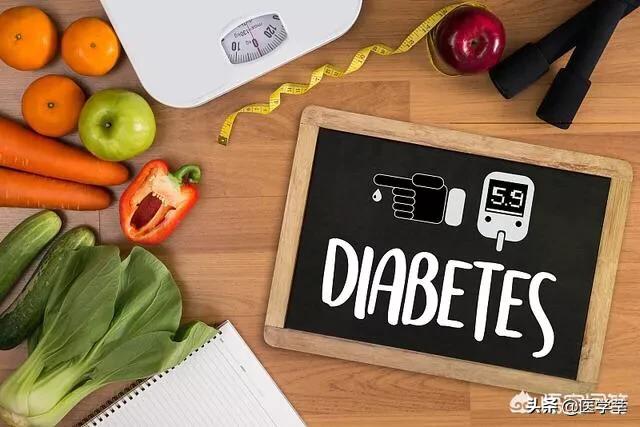
In summary, diabetic patients with wasting first need to consider the blood glucose does not meet the standard, should be adjusted through the glucose lowering program, increase the rate of blood glucose standardization is conducive to the recovery of body weight; secondly, should consider the insufficient eating, it is recommended that according to their own intensity of exercise to formulate a reasonable dietary plan to increase body weight; in addition, need to pay attention to exclude oncological diseases. Since over or obesity is not conducive to the control of diabetes mellitus, it is recommended that diabetic patients keep their BMI within 24.
Thank you all for reading!
Please correct me if I'm wrong! Feel free to ask and share in the comments section!
Note: The content of this article is intended as health science only, and is not intended as medical advice or opinion, and does not qualify as medical guidance.
In the clinic, it is often seen that some diabetic patients have a gradual weight loss, so some people are very worried about whether they will just stay thin?
Some thin diabetics would very much like to put on some weight, so what can be done to gain weight in a thin diabetic who has ruled out consumptive diseases such as tuberculosis and tumors?
Causes of weight loss
Obesity is a high risk factor for the development of diabetes, so for type 2 diabetics, obese patients may be more. There is an abnormality of glucose metabolism, elevated blood sugar, eaten food can not be fully utilized, the body will consume their own fat and protein for energy, then obese diabetes will also be a gradual loss of body weight, and even have the possibility of dropping below normal body weight.
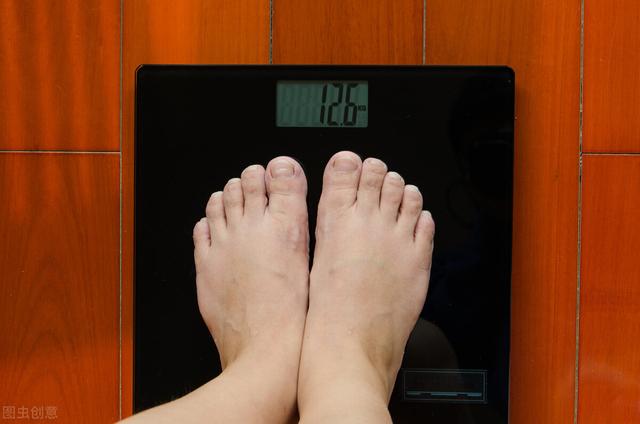
A portion of the population with normal weight may have normal weight, but have more body fat and less muscle mass. If there is a family history of diabetes or the person's work life is too stressful, nervous, smoking and other factors, there is also a possibility of developing diabetes, and also have a lower-than-normal weight.
Diabetic friends who are on glucose-lowering therapy and use glucose-lowering medications that have a weight-reducing effect, such as biguanides, glycosidase inhibitors, GLP-1 receptor agonists, and SGLT-2 inhibitors, also experience weight loss.

Knowing the causes of weight loss, diabetic friends can avoid falling below normal weight and maintain a standard weight status.
Calculation of standard weight
The standard weight is the height minus 105 and the resulting kilograms, which is the standard weight. Above this state is overweight or obese and unhealthy.
How to maintain a standard weight
The way to maintain a standardized body weight is to smooth out blood sugar, increase nutrition, exercise, and reduce the use of glucose-lowering medications that have a weight-reducing effect.
One of the things that is very important is strengthening exercise, which builds muscle, which is denser than fat, so that not only can you gain weight, but you can increase the utilization of glucose by your muscles and lower your blood sugar.

During the course of treatment with glucose-lowering medications, if weight loss continues to be below standard weight, you can talk to your supervising physician about choosing a glucose-lowering medication that does not have a significant weight loss effect.
I'm Dr. Sun. Follow Dr. Sun on Sugar and keep learning more about quality health.
To learn the answer, see
{!-- PGC_VIDEO:{'thumb_height': 1080, 'vposter': 'http://p1.toutiaoimg.com/origin/tos-cn-p-0000/f216f10cc7364c10ba1942f8c3b00150', 'thumb_width': 1920, 'vid': 'v02016c60000br3lj54d1draa9e8cirg', 'vu': 'v02016c60000br3lj54d1draa9e8cirg', 'duration': 122.326, 'thumb_url': 'tos-cn-p-0000/f216f10cc7364c10ba1942f8c3b00150', 'thumb_uri': 'tos-cn-p-0000/f216f10cc7364c10ba1942f8c3b00150', 'video_size': {'high': {'duration': 122.326, 'h': 1080, 'w': 1920}, 'ultra': {'duration': 122.326, 'h': 1080, 'w': 1920}, 'normal': {'duration': 122.326, 'h': 1080, 'w': 1920}}} --}
For the majority of people with diabetes, it is true that some people will experience significant weight loss. There may be some specifics here that vary from person to person. There are two of the most common, and Dr. Zhang will give you an overview of each.

People with diabetes are getting thinner and thinner, and as I summarize, they can be roughly divided into 3 types: a healthy thinness and an unhealthy thinness.
1. Unhealthy thinness
For people with diabetes, if their blood sugar is high and uncontrolled, they may experience unhealthy weight loss. This is also known as the classic "three more and one less" symptoms, which are excessive urination, excessive drinking, excessive eating and weight loss. Generally speaking, type 1 diabetes is more likely to have significant weight loss than the now common type 2 diabetes. A lot of this significant weight loss and increasing thinness at this point is due to poor blood sugar control. The key to solving this problem is still to get the blood sugar under control as soon as possible, generally with the blood sugar under control, the patient's weight will slowly increase and return to the normal range.
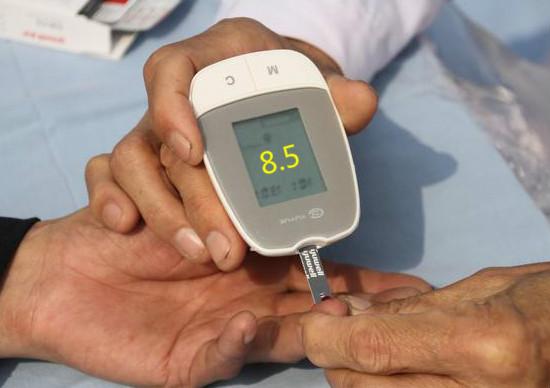
2. Healthy lean
There are also some diabetic patients, they because they have diabetes will pay more attention to scientific diet, adherence to physical exercise, weight control, so their weight compared to the previous state of overweight and obesity, there will be a significant reduction. At this time this weight reduction, most because of lifestyle health brought about by a relatively healthy thin.

3. Leanness from other diseases
There are also some diabetic patients whose weight loss is not due to blood sugar, nor is it due to a healthy lifestyle, the reason behind it is the occurrence of some other diseases that can trigger weight loss, such as tumors, hyperthyroidism and so on. At this time, it is imperative to identify the cause of the disease as soon as possible and treat the primary disease as soon as possible.
All in all, for diabetics, significant weight loss should not be neglected, but must be taken seriously, the cause of the disease should be investigated, and treatment should be provided. Of course, if it turns out that the weight loss is due to a healthy lifestyle, that's a different story. Isn't that right?

Reasons for getting thinner with diabetes
1. High blood sugar leads to high urine sugar and energy loss from urine leads to wasting
2. Drugs, metformin appetite suppression can lead to wasting, in addition to GLP_1 agonists can also lead to wasting, but also byzantine, SGL-T2 drugs can lead to wasting.
3. Combination of tuberculosis, tumors (pancreatic tumors) and other wasting diseases can lead to wasting.
4. Transitional diet control and excessive exercise can lead to wasting.
Identify the cause and treat the symptoms.
After October 1 last year, admitted a patient with motor nerve palsy, male, retired driver, 61 years old, diagnosed with diabetes mellitus due to emaciation examination, now the history of diabetes mellitus for 20 years, that is to say, for 20 years there is no weight gain. At the end of the year weight gain of 10 pounds. Acupuncture only for motor eye nerve palsy. Acupuncture points were taken around the eyes. Before and after treatment 50 times. Started to see rounding of the affected side. The patient said that he did gain weight, and he also felt that his sleep quality was good. Diet as usual, no change. It seems that weight gain has little to do with food, but is closely related to sleep quality.
Windfall. No promotion.
If a sugar patient's body continues to get thinner and thinner, or suddenly lose a lot of weight, it is likely to be caused by poor blood glucose control than persistently high, blood glucose continues to be high state and insulin utility related to insufficient insulin in the body, insulin can't play its effect, can't effectively lower sugar, and also can't give the body more energy sources, sugar patients will get thinner and thinner.
The reason for this goes back to insulin.
Insulin is the only hormone in our body that can lower glucose, insulin's role is similar to a key that opens the door of glucose in the blood to the cells, it can send the glucose obtained in the blood into the cells to provide energy, not only to maintain the balance of the blood sugar, and play the effect of lowering glucose, but also to allow the cells to obtain energy. If the insulin problem, or insulin is insufficient, it can be imagined that the glucose in the blood has no place to go, blood glucose can only continue to be high, the cells can not get glucose energy, but our body is certainly the demand for energy supply ah, that can not be helped, the brain had to order to temporarily use our reserves of energy, and then the consumption of fat and protein to carry out a substantial amount of, naturally, the person will be thin.
This is actually one of the typical "three more and one less symptoms" that diabetics experience before taking any measures, "drinking more, urinating more, eating more, and losing weight", even if we eat more food, we can't capture the glucose to supply energy to our cells, and we end up get thinner and thinner. Typical type 1 diabetic patients, due to the damage of pancreatic islet cells, almost completely unable to release insulin's sake, the weight will be in a very short period of time on the dramatic decline, a fat people can be hard to thin bones. Therefore, if the weight loss of the sugar lover is very serious, was already very thin still continue to decline, then also need to pay attention to, may be because of your body's insulin did not play a role in your body, your body can not get energy caused by. Many diabetic patients feel able to control blood sugar through diet and exercise, refusing to take medication and inject insulin, the result is that in the end, in fact, the blood sugar control is not good, the glycated hemoglobin value is poorer, which in turn may increase the chances of triggering complications, so that the body more painful.

Therefore, if the sugar lover wants to gain a little weight, the first thing to consider is whether their blood sugar is properly controlled, in the diet can be appropriate to reduce the proportion of carbohydrate energy supply, increase the proportion of fat and protein energy supply, although the impact of fat on blood sugar is smaller, but do not blindly and dramatically increase fat intake, drastically cut the intake of carbohydrates, although it is true that the sugar lover does not like the sugar, but it does not mean that the sugar lover does not need the sugar, the sugar lover also Glucose is needed for energy, so carbohydrates should not be cut drastically, and it is not recommended that carbohydrates account for less than 40% of energy. Many sugar lovers also think that the need for a low-fat diet, do not eat oil and do not eat meat, in order to smooth the blood sugar on the staring vegetables to eat, this will certainly also make the body thin, although excessive fat intake can cause obesity, increased insulin resistance, diabetes is not good, but it does not mean that a little bit of fat are not eaten, it is best to weigh the nutritional, the meat should be consumed in moderation, more choice of lean meat, avoid excessive intake of fat meat, pincushion meat.
Sugar users can also consider developing an exercise habit. Exercise can improve physical fitness, increase muscle mass, and improve cardiorespiratory fitness. Exercise can also help to stabilize blood glucose, so that blood glucose can be stabilized more quickly, and reduce the incidence of high blood cholesterol, high blood pressure, and coronary heart disease, which can also help to reduce the incidence of diabetic complications, and to maintain a reasonable body weight.
First of all, sugar patients should be clear about a status quo, that is, diabetic patients thin, not because of dietary reasons, but the typical symptoms of diabetes "three more and one less" performance! Wasting is one of the symptoms of diabetes, so people with diabetes do not first think of eating fat, but should think of how to control diabetes!
Diabetes is one of the leading chronic non-communicable diseases that seriously affects people's lives and health!
How can I eat fat if my diabetic body is getting thin?
The prevalence of diabetes in obese and overweight people has increased significantly, and the prevalence of diabetes in the obese population has increased by a factor of two, so don't think about eating fat, keep from being overweight first, and then treat diabetes! BMI <25 者糖尿病患病率为 7.8%、25 ≤ BMI><30 者 患 病 率 为 15.4%,BMI ≥ 30 者患病率为 21.2%。>Blood glucose monitoring has evolved from only being able to test blood glucose in the hospital, to continuous glucose monitoring, and even non-invasive blood glucose monitoring.
Diet is complementary to treatment!
In terms of diet, it is important to eat less high-sugar and high-fat foods and more vegetables and fruits! Treatment has gone from a very small variety of glucose-lowering drugs, such as sulfonylureas, biguanides, and human insulin, to a rich variety of drugs with fewer adverse effects, such as dipeptidyl peptidase IV (DPP-4) inhibitors, glucagon-like peptide-1 (GLP-1) agonists, sodium-glucose cotransporter protein 2 (SGLT2) inhibitors, and insulin analogs, as well as surgical treatments.
Indicators of glycemic control in diabetic patients include glycosylated hemoglobin, fasting, and postprandial glucose, with glycosylated hemoglobin reflecting the patient's 2-month average blood glucose level. Elevated glycated hemoglobin can increase the risk of diabetic complications. So it is important to control these indicators!
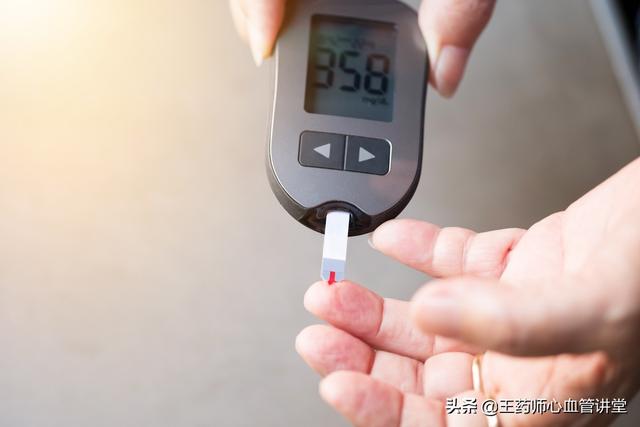
What are the types of diabetes?
Type 1 diabetes, type 2 diabetes, and GDM are common clinical types.
The pathogenesis of type 1 diabetes is unclear, and its distinguishing pathological and pathophysiological feature is a significant decrease or absence of insulin secretion resulting from a significant decrease and loss of islet B cell numbers.Type 2 diabetes is also unclear, and its distinguishing pathophysiological feature is a decrease in insulin's ability to regulate glucose metabolism accompanied by decreased insulin secretion as a result of defects in pancreatic B cell function. Specialized types of diabetes are diabetes mellitus with relatively well-defined etiology. Of these, type 2 diabetes is the most common type!
In future diabetes education, patients need to be helped to establish comprehensive self-management behaviors to achieve good glycemic control and reduce the occurrence and development of complications. Good behavior is the basis for effective glycemic control in diabetes.
I am Pharmacist Wang, insisting on spreading the knowledge of cardiovascular and cerebrovascular diseases with simple and easy-to-understand words, and dedicating my own small efforts for a healthy China. If you think my answer is helpful to you, please leave a like it! In addition, if you still have related questions, welcome to leave a message, we discuss together!
Diabetic patients are getting thinner and thinner.There are 4 scenarios to be distinguished:
Type 1 is really skinny, skin and bones;
Type 2 is when you think you're thin, but you're not;
The 3rd type is the thin one that continues to lose weight and seems to be in decent shape, but has very little muscle;
Type 4 is the best kind of thinness, which is a very high proportion of muscle, a very tight and lean body, but at a standard weight.
Distinction method you can see my article "Fat people diabetes to lose weight, what about thin people? , which has the judgment method and calculation formula.

In addition to this good thinness created by exercise workouts, theWhy do diabetics get thin?? There are at least 5 reasons:
- With your blood sugar is too high, we know that if the blood sugar is too high, the body will be regulated by eliminating the urine sugar, that is, you eat in the calories did not play a role, was urinated out, so the body did not get the energy to replenish, grow not fat. Get your blood sugar adjusted quickly.
- The 2nd possibility is that you are taking appetite suppressants such as metformin and GLP-1 inhibitors. You can alert your doctor to see if you need to change your medication.
- There is also a kind of people are naturally thin, eat not fat, may be digestion and absorption ability problem. Diabetic patients who have been sick for a long time, gastrointestinal function may also be affected, so it is necessary to regulate the intestinal flora, eat more unsweetened plain yogurt, eat more coarse grains rich in dietary fiber as well as fresh vegetables. Eat less fried food and processed food, so as not to further aggravate the intestinal flora disorder.
- Poor appetite due to lack of activity. Proper exercise will promote digestion and gastrointestinal peristalsis, while too little sedentary activity may lead to slow gastrointestinal peristalsis, poor digestion and absorption, and poor appetite.
- Excessive diet control. Some diabetics mistakenly think that eating less will make their blood sugar better, not realizing that eating less comes at the expense of the nutrients their bodies need. Eating a healthy diet and eating normally is sufficient. This can be supplemented with diet and moderate exercise to help keep your blood sugar under control.
You can refer to my previous article, "This Milk is a Must for Diabetic Patients", for more information on choosing milk.
Manual code, elaborate answer, if it is helpful, please help to like or follow, thank you ❤
[Professional doctor to answer your questions
Many people know that "three more and one less", i.e., eating more, drinking more, urinating more and losing weight are typical symptoms of diabetes, but what many people don't know is that these symptoms usually don't appear in the early stage of diabetes, and they will be obvious as the disease progresses, especially when the diabetes is not under effective control and when some complications occur. In particular, weight in the early stage of diabetes is more often manifested as overweight or even obesity, the disease progresses to a certain extent will be manifested as weight loss until wasting, so the weight can be regarded as a measure of the treatment of diabetes as an indicator.
Since this is the case, when a person with diabetes is getting thinner and thinner, it is necessary to analyze the causes in time to take appropriate measures in order to improve the weight gradually put on weight. So, what are the possible reasons why people with diabetes are getting thinner?
First, poor glycemic control
Mr. Zhang is not too concerned about their blood sugar, always think that the body and no discomfort, the doctor let take the sugar-lowering drugs are also think up to take, forget to laugh, the results of more than a year of weight loss of more than 10 kilograms, the whole person looks smaller than before one.
For people with diabetes, controlling blood sugar is the most basic treatment. When fasting blood sugar often exceeds 7.0mmol/L, and 2-hour postprandial blood sugar is often higher than 10.0mmol/L, it indicates that the body's ability to utilize blood glucose is poor, and in order to obtain enough energy to maintain various physiological activities, the body has to break down proteins and fats for energy supply, and the subcutaneous fat decreases and muscle protein is consumed. Subcutaneous fat decreases and muscle protein is consumed, and the body weight decreases and becomes thin.
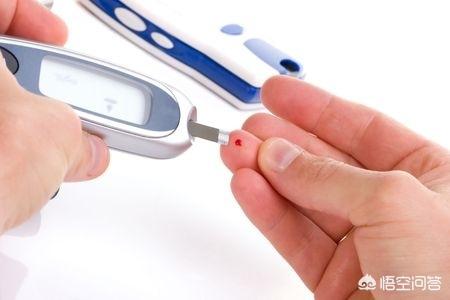
Second, too strict a dietary control
moncler outlet online Since the discovery of diabetes, in the daily eating and drinking no less effort, in his ideological understanding of diabetes is to eat out of the problem, firmly believe that eating out of the problem can be eaten back to their own eating and drinking to the degree of almost harsh, the results of blood sugar does achieve the results he thought of, but the weight is constantly losing.
This situation is very common in the middle-aged and elderly people, in order to control blood glucose and deliberately pursue "less" in the diet, in fact, is "eat less" there are misunderstandings and lead to. It is important to know that the dietary control of diabetes is not to control what to eat, but to limit the total calorie intake throughout the day, the total calories need to be provided by the three major nutrients of carbohydrates, fats and proteins, 60% of which are provided by carbohydrate-rich staple foods, 20% should be provided by fatty foods such as cooking oil, nuts, etc., and 15% should be provided by lean meats, milk and eggs, soybean products, etc.. Therefore, it is possible for people with diabetes to eat less staple food, but at the same time they must eat enough fatty foods and high-quality protein, especially meat, milk and eggs if the intake is insufficient, which will lead to malnutrition and lead to wasting.
Third, too much exercise
More blood sugar in the body, find a way to discharge it, Mr. Li's approach is as long as there is time to do exercise, every day in the afternoon and evening to go brisk walking for a few hours, and very persevering all the time, thinking that the body will become more and more sturdy and strong, but I did not expect to lose more and more lightweight, to the point of emaciation.
Exercise is the process of consuming energy, very helpful in controlling blood sugar, but not the more exercise the better. Research has confirmed: a daily exercise lasting 30-45 minutes can sweat, can achieve the role of promoting the utilization of blood glucose, and this effect can last nearly 20 hours, excessive exercise will aggravate the burden on the pancreatic islet cells leading to damage, but also due to the consumption of blood glucose is too much and decomposition of fats, proteins, energy, is also a common cause of weight loss.

Fourth, accompanied by other diseases
For people with diabetes, controlling blood glucose is a must, but it is not the ultimate goal. Stopping and delaying the occurrence of various complications is the most important. Ms. Liu is very concerned about her blood glucose, and has her own blood glucose meter to measure often, but never went to the hospital to do other aspects of the examination, until nearly a year to continue to lose weight to go to the doctor, the doctor said that her loss of weight and complications have a lot to do with the occurrence of.
Diabetes is a metabolic disease, the whole body will have an impact on all physiological functions, leading to a common cause of wasting is diabetes caused by hyperthyroidism, which the body will be in a prolonged period of time in a state of exuberance, excessive consumption of glucose, fat, protein; diabetes may also cause peripheral neuropathy, such as gastrointestinal nerve damage to the gastrointestinal nervous system seriously affects digestion and absorption, resulting in malnutrition, and so on, and so on.
In summary, people with diabetes to "eat fat" need to look for reasons from the above aspects, targeted to take corresponding measures. For example, poor blood sugar control to adjust the use of hypoglycemic drugs program, dietary control and exercise is too strict to give adjustments, if complications occur for targeted treatment.
I hope this answer can help you, welcome to click on the attention and leave a message, together to learn and exchange more health knowledge.
This question and answer are from the site users, does not represent the position of the site, such as infringement, please contact the administrator to delete.